
LAW / Referencing for Law Students / AGLC 3rd ed
.pdf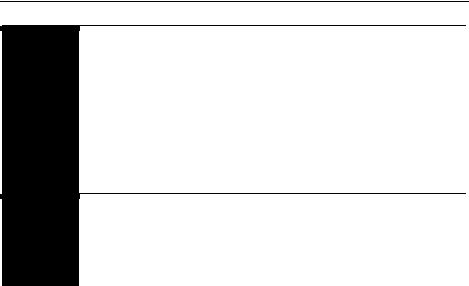
90 Part III — Secondary Sources
5.1.2Editors
|
|
Rule |
|
The name of the editor of a book should appear in the same manner as |
|
|
|
|
an author’s name and should be followed by ‘(ed)’ for one editor or |
|
|
|
|
‘(eds)’ for multiple editors. |
|
|
|
|
|
|
|
Examples |
|
R G Frey (ed), Utility and Rights (Basil Blackwell, 1985). |
|
|
|
|
Jason W Neyers, Erika Chamberlain and Stephen G A Pitel (eds), |
|
|
|
|
Emerging Issues in Tort Law (Hart Publishing, 2007). |
|
|
|
|
John Bowers et al (eds), Blackstone’s Employment Law Practice 2009 |
|
|
|
|
(Oxford University Press, 2009). |
|
|
|
|
|
5.2Title
Rule
Examples
The title of a book should appear italicised as it appears on the title page of the book. It should appear in accordance with chapter 1. In particular:
•punctuation should adhere to rule 1.6.1 (so full stops should not be used after initials or in abbreviations); and
•capitalisation should adhere to rule 1.7.
Where there is no punctuation on the title page separating the title from a subtitle, a colon or an em-dash should be inserted.
Alistair Pound and Kylie Evans, An Annotated Guide to the Victorian Charter of Human Rights and Responsibilities (Lawbook, 2008).
Prue Vines, Law and Justice in Australia — Foundations of the Legal System (Oxford University Press, 2nd ed, 2009).
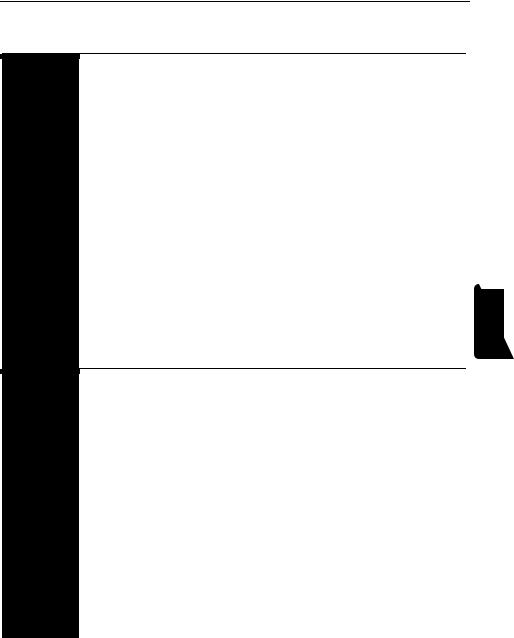
Australian Guide to Legal Citation |
91 |
5.3Publication Details
5.3.1Publisher
Rule A brief version of the publisher’s name should be included in parentheses after the title. It should be followed by a comma.
Sufficient information to identify the publisher (and no more) should be included. The publisher’s name should appear as on the title page (or in the publication information), except that:
•‘the’ at the start of the name should be omitted;
•abbreviations related to the publisher’s corporate status (‘Pty’, ‘Ltd’, ‘Co’, etc) should be omitted;
•geographical designations (‘Australia’, ‘A/Asia’, etc) in company names should be omitted, unless they are an important part of the name; and
•subdivisions within companies should be omitted.
A publisher’s name should only be included if it appears in the book. A publisher’s name should not be included where the publisher’s and the author’s names are the same.
Examples Ngaire Naffine, Law’s Meaning of Life: Philosophy, Religion, Darwin and the Legal Person (Hart Publishing, 2009).
David Brown and Meredith Wilkie (eds), Prisoners as Citizens: Human Rights in Australian Prisons (Federation Press, 2002). [Not:
… The Federation Press …]
Clive Turner, Australian Commercial Law (Lawbook, 29th ed, 2009). [Not: … Lawbook Co … nor … Lawbook Company …]
Martin Davies and Ian Malkin, Torts (LexisNexis Butterworths, 5th ed, 2008). [Not: … LexisNexis Butterworths Australia …]
McGill Law Journal, Canadian Guide to Uniform Legal Citation
(Carswell Thomson, 4th ed, 1998). [Not: … Carswell Thomson Professional Publishing …]
Books
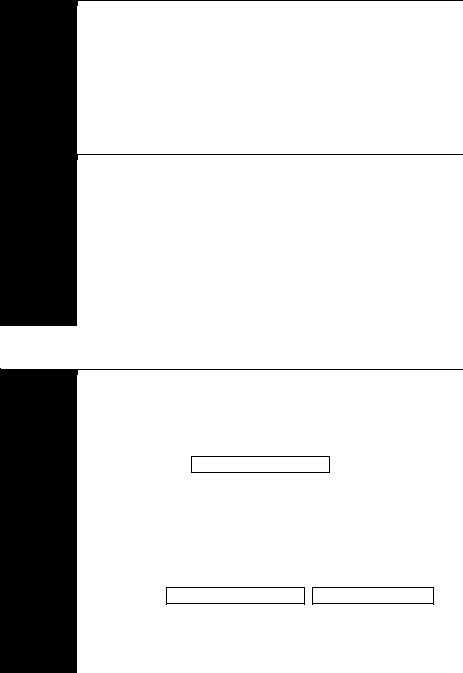
92 Part III — Secondary Sources
Notes
Elizabeth Ellis, Principles and Practice of Australian Law (Thomson Reuters, 2nd ed, 2009). [Not: … Thomson Reuters (Professional) Australia Ltd …]
Martin Vranken, Death of Labour Law? Comparative Perspectives
(Melbourne University Press, 2009).
Law Institute of Victoria, Legal Directory 2006 (2005). [Not: … Legal Directory 2006 (Law Institute of Victoria, 2005).]
Usually, it is sufficient to include only the first two or three words of a publisher’s name, especially where the publisher is readily identifiable.
The name of a printer of a book (that is not also its publisher) should not be included, even if no publisher appears on the book.
A publisher’s name is often unnecessary for documents where a government or government department is the author, as these are usually self-published.
5.3.2Edition Number and Date of First Publication
Rule Where there are multiple editions of a book and an edition number (for example, ‘2nd edition’) appears in the book being cited, the edition number should be included after the publisher’s name. It should appear as follows:
Ordinal Edition Number ed,
The ordinal number of the edition should adhere to rule 1.12.1 (so the letters in the ordinal number should appear in superscript).
For older books, the year of first publication and the year of the publication being cited may be included instead of an edition number. This should appear as follows:
first published Year of First Publication , Year of Edition Cited ed)
Information concerning reprints should not be included. Where no edition number is indicated in the book, no edition number should be included.
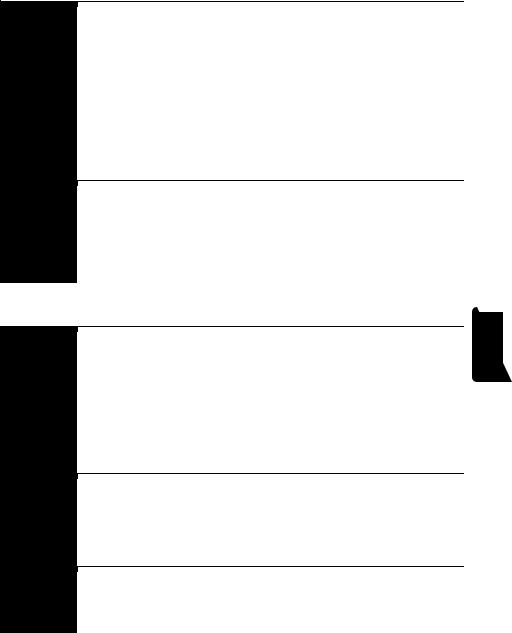
Australian Guide to Legal Citation |
93 |
Examples Patricia Birnie, Alan Boyle and Catherine Redgwell, International Law & the Environment (Oxford University Press, 3rd ed, 2009).
Thomas Hobbes, Leviathan (Clarendon Press, first published 1651, 1909 ed).
Sir Matthew Hale, Historia Placitorum Coronae (London Professional Books, first published 1736, 1971 ed) vol 1, 635.
George Orwell, Animal Farm: A Fairy Story (Secker and Warburg, first published 1945, 1998 ed) 23.
Note Where the book does not contain an edition number but has been republished in multiple years, the year of first publication and year of the publication being cited should generally replace an edition number. This is typically the case for books published prior to the 20th century or popular books republished by several publishers.
5.3.3Revised Editions
Rule |
Where a book is a ‘revised’, ‘expanded’ or ‘updated’ edition but does |
|
not have a new edition number, this should be indicated by including |
|
|
|
‘revised ed’: |
•if there is an edition number, after the edition number and preceded by a space; or
•if there is no edition number, after the publisher’s name and preceded by a comma.
Examples E J Cohn and W Zdzieblo, Manual of German Law (Oceana Publications, 2nd revised ed, 1968) vol 1.
Peter Birks, An Introduction to the Law of Restitution (Clarendon Press, revised ed, 1989) 18.
Note An unnumbered revised edition is generally a revision of the first edition of a work. ‘1st revised ed’ should be used only where the edition number appears in the book.
Books
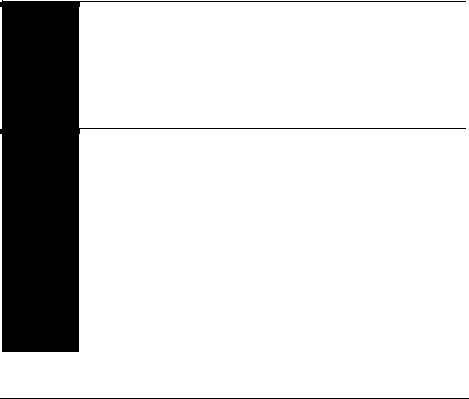
94 Part III — Secondary Sources
5.3.4Publication Year
Rule The year of publication should appear following the name of the publisher and any edition number.
A completed multi-volume work that was published over a range of years should include the first and final years of publication as a span (in accordance with rule 1.13.1). If publication is still in progress, the first year and an en-dash should appear.
Examples Andrew D Mitchell and Jennifer L Beard, International Law: In Principle (Thomson Reuters, 2009).
B Edgeworth, C J Rossiter and M A Stone, Property Law: Cases and Materials (LexisNexis Butterworths, 7th ed, 2004).
Jonathan I Charney, Lewis M Alexander and Robert W Smith (eds),
International Maritime Boundaries (Martinus Nijhoff, 1993–2002).
Jeremy Bentham, Rationale of Judicial Evidence (Garland Publishing, first published 1802–12, 1978 ed) vol 1.
Pamela Andre (ed), Documents on Australian Foreign Policy 1937–49
(Department of Foreign Affairs and Trade, 1975–) vol XVI, 159.
5.4Pinpoint Reference
5.4.1General Rule
|
Rule |
|
A pinpoint reference should be preceded by a space. There should be |
|
|
|
no punctuation between the closing parenthesis (containing the |
|
|
|
publication details) and the pinpoint reference. |
|
|
|
Pinpoint references should adhere to rules 1.1.5–1.1.6. If a book has |
|
|
|
page numbers, pinpoint references should be to page numbers. If a |
|
|
|
book has page numbers and paragraphs, pinpoint references may be to |
|
|
|
page numbers and paragraph numbers. If the book has only numbered |
|
|
|
paragraphs, a pinpoint reference should be to a paragraph. |
|
|
|
When referring to a numbered chapter of a book, ‘chapter’ should be |
|
|
|
abbreviated to ‘ch’. |
|
|
|
|

Australian Guide to Legal Citation |
95 |
Examples Margaret C Jasper, Home Mortgage Law Primer (Oceana Publications, 3rd ed, 2009) 70–7. [Not: … (Oceana Publications, 3rd ed, 2009), 70–7.]
Charles Mitchell and Stephen Watterson, Subrogation: Law and Practice (Oxford University Press, 2007) 9 [2.02].
James Edelman and Elise Bant, Unjust Enrichment in Australia
(Oxford University Press, 2006) ch 4.
5.4.2Multi-Volume Books
|
|
Rule |
|
If the book contains more than one volume, the number of the volume |
|
|
|
|
cited should appear after the publication details, preceded by ‘vol’. |
|
|
|
|
A comma should separate the volume number from any further page |
|
|
|
|
or paragraph pinpoint references (for example, ‘vol 4, 466’ refers to |
|
|
|
|
page 466 in volume 4). |
|
|
|
|
|
|
|
Examples |
|
Sir Gerald Fitzmaurice, The Law and Procedure of the International |
|
|
|
|
Court of Justice (Grotius Publications, 1986) vol 2, 430. |
|
|
|
|
J Guéron et al (eds), The Economics of Nuclear Power Including |
|
|
|
|
Administration and Law (Pergamon Press, 1956–59) vol 1, 396. |
|
|
|
|
|
|
|
Note |
|
Where the volumes of a book were published in different years, the |
|
|
|
|
span of years over which all volumes were published should be |
|
|
|
|
included in the publication information, in accordance with rule 5.3.4. |
|
|
|
|
|
Books
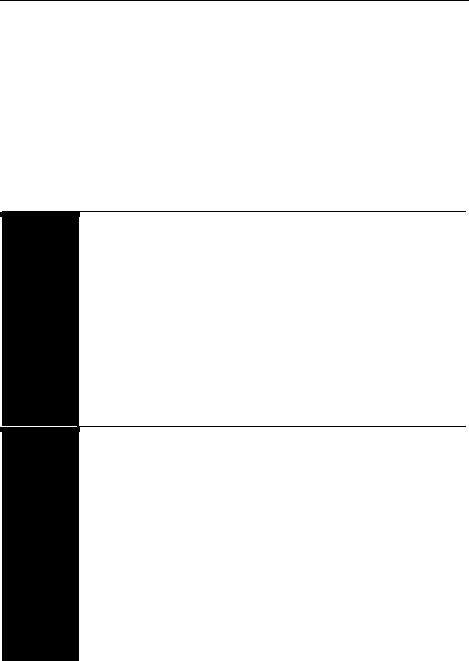
96 Part III — Secondary Sources
5.5Chapters in Edited Books
|
|
|
|
|
|
|
Simone |
|
|
|
|
|
|
|
|
|
‘Proprie- |
|
Degeling |
Equity in |
(Law- |
|
|
|
|
Example |
|
Peter |
tary |
in |
and |
Commer- |
book, |
123 |
, 138 |
|
|
|
Millett, |
Restitu- |
James |
||||||
|
|
|
|
|
tion’ |
|
Edelman |
cial Law |
2005) |
|
|
|
|
|
|
|
|
|
(eds), |
|
|
|
|
|
|
|
|
|
|
|
|
|
|
|
|
|
|
|
|
|
Chapter |
|
|
Book |
Publi- |
Starting |
Pin- |
|
|
Element |
|
Author |
in |
Editor |
cation |
||||
|
|
|
|
|
Title |
|
|
Title |
Details |
Page |
point |
|
|
|
|
|
|
|
|
|
|
|
|
|
|
|
|
|
|
|
|
|
|
|
|
Rule
Examples
Chapters in edited books should be cited as shown above.
The chapter title should be enclosed in single inverted commas. There should be no other punctuation between the chapter title and ‘in’. The starting page is that on which the chapter cited begins.
Where multiple chapters from an edited collection are cited, the details of the edited collection should be included in full in the first reference to each chapter.
Subsequent (‘above n’) references to a chapter from an edited collection should use the names of the authors of the particular chapter and refer to the footnote in which the chapter is first cited.
22 Meg Russell, ‘Reform of the House of Lords: Lessons for Bicameralism’ in Nicholas Aroney, Scott Prasser and J R Nethercote (eds), Restraining Elective Dictatorship: The Upper House Solution? (University of Western Australia Press, 2008) 119.
…
43Janet Ransley, ‘Illusions of Reform: Queensland’s Legislative Assembly since Fitzgerald’ in Nicholas Aroney, Scott Prasser and J R Nethercote (eds), Restraining Elective Dictatorship: The Upper House Solution? (University of Western Australia Press, 2008) 248, 252. [Not: … in Aroney, Prasser and Nethercote (eds), above n 22, 248, 252.]

Australian Guide to Legal Citation |
97 |
…
45Russell, above n 22, 122.
46Ransley, above n 43, 255. [Not: Ransley, above n 22, 255.]
5.6Translations
|
|
|
|
|
Being and |
|
Methuen, |
|
[trans of: |
|
|
|
|
|
Nothingness: |
|
|
||
|
|
|
|
Jean- |
(Hazel E |
first |
|
L’Etre et le |
|
|
|
Example |
Paul |
An Essay on |
Barns |
published |
151 |
Néant (first |
|
|
|
Phenomonol- |
|||||||
|
|
|
|
Sartre, |
trans, |
1958, 1969 |
|
published |
|
|
|
|
|
|
ogical |
|
ed) |
|
1943)] |
|
|
|
|
|
Ontology |
|
|
||
|
|
|
|
|
|
|
|
|
|
|
|
|
|
|
|
|
|
|
|
|
|
Element |
Original |
Translation |
Translator |
Translation |
Pin- |
Original Title |
|
|
|
Author |
Title |
Publication |
point |
and Year |
|||
|
|
|
|
|
|
|
Information |
|
|
|
|
|
|
|
|
||||
|
|
Rule |
|
Translations should be cited as shown above. |
|
|
|||
|
|
|
|
|
|||||
|
|
|
|
|
|
|
|
|
|
The original title may be included in square brackets after any pinpoint. However, if the translation title appears in the original language, it is not necessary to include the original title.
The year in which the original work (used by the translator) was first published, or its edition number and year of publication, may also be included in square brackets after any pinpoint. If the original title is included, the year (or year and edition number) should appear in parentheses after the original title. If the original title is not included, the year (or year and edition number) should appear in square brackets (without parentheses).
In accordance with rule 1.7, titles in a foreign language should be capitalised in accordance with convention in that language.
Examples The Qur’an (Tarif Khalisi trans, Harvard University Press, 1972).
Books

98 Part III — Secondary Sources
Friedrich Nietzsche, Thus Spoke Zarathustra: A Book for Everyone and No One (R J Hollingdale trans, Penguin Books, 1961) 210–13 [trans of: Also sprach Zarathustra: Ein Buch für Alle und Keinen (first published 1883–85)].
Hans-Georg Gadamer, Truth and Method (Garrett Barden and John Cumming trans, Crossroad, 1975) [trans of: Wahrheit und Methode: Grundzüge einer philosophischen Hermeneutik (2nd ed, 1965)].
Emmanuel Levinas, Entre nous (Michael B Smith and Barbara Harshav trans, Athlone Press, 1998) 27 [first published 1991].
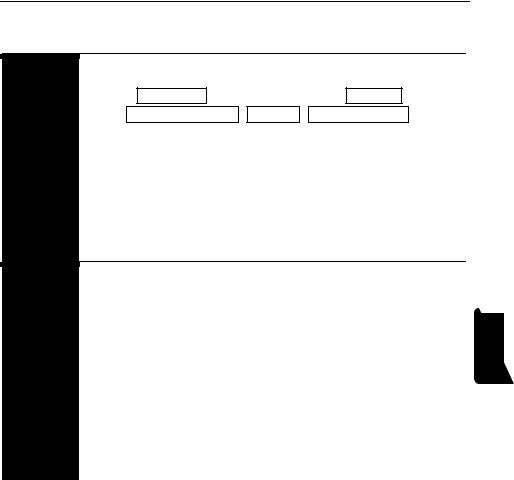
99
6 Other Sources
6.1Government Documents
6.1.1Parliamentary Debates
Rule |
Parliamentary debates (or ‘Hansard’) should be cited as follows: |
|
|
Jurisdiction , Parliamentary Debates, Chamber ,
Full Date of Debate , Pinpoint ( Name of Speaker ).
Names of speakers should adhere to rule 1.14. If a speaker’s name is included, their first and last names should appear. ‘MP’, ‘MLC’, ‘MLA’, ‘Senator’ and other designations indicating membership of Parliament should not be included in the speaker’s name. If it is relevant, the position of the speaker within a ministry or shadow ministry (or any part of their position which is relevant) may be included after their name, preceded by a comma.
Examples Commonwealth, Parliamentary Debates, Senate, 18 June 2008, 2642–4 (Bob Brown).
Victoria, Parliamentary Debates, Legislative Assembly, 4 May 2006, 1289–95 (Rob Hulls, Attorney-General).
The second reading speech for the Migration Amendment Bill 1983 (Cth) was incorporated by reference in the Senate.23
__________
23Commonwealth, Parliamentary Debates, Senate, 7 September 1983, 373–4 (John Button). [Not: … 373–4 (John Button, Minister for Industry and Commerce).]
6.1.2Parliamentary Papers
|
Rule |
|
Parliamentary papers should be cited as follows: |
||||||||||
|
|
|
|
|
, |
|
, Parl Paper No |
|
( |
|
) |
|
. |
|
|
|
|
Jurisdiction |
Title |
Number |
Year |
Pinpoint |
|||||
|
|
|
|
|
|
|
|
|
|
|
|
|
|
Other
Sources
